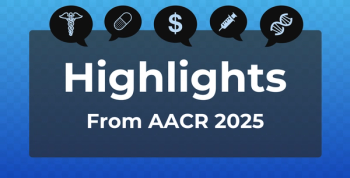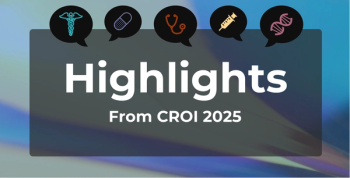
Gaps Exist in Diabetic Retinopathy Screening Knowledge Among Providers, Study Finds
Key Takeaways
- Significant gaps exist in HCPs' knowledge, attitudes, and practices regarding DR screening, particularly among non-ophthalmic professionals.
- Inadequate training, lack of screening tools, and high workload are common barriers to effective DR screening.
A review of 59 studies finds inconsistent knowledge, attitudes, and practices among health care professionals in detecting diabetic retinopathy.
Diabetic retinopathy (DR) remains one of the leading causes of preventable vision loss worldwide, yet many patients are missing out on early detection due to gaps in screening by health care professionals (HCPs), according to one study.1 A systematic review reveals wide variations in providers’ knowledge, attitudes, and practices, with nonophthalmic clinicians particularly underprepared.
The findings underscore the urgent need for ongoing training and improved access to screening tools at the primary care level.
This narrative review is published in
“There are important gaps in the knowledge, attitudes, and practices regarding DR screening among HCPs, particularly non–ophthalmic-trained HCPs,” wrote the researchers of the study. “These HCPs have limited knowledge of the risk factors, early signs, and progression stages of DR, and attitudes that reflect that DR screening should be the responsibility of ophthalmic-trained HCPs only.”
DR is an eye disease that can develop in people with
The researchers reviewed existing studies from Medline, Google Scholar, Science Direct, and EBSCOhost, looking at both numerical data and interview-based research, covering a wide range of study types.1 Each study was carefully checked for quality using a standard tool to make sure the findings were reliable. In the end, 59 studies were included, providing insight into HCPs’ knowledge, attitudes, and day-to-day practices around DR screening and referrals.
Of the studies reviewed, 47 (79.7%) assessed HCPs’ knowledge of DR, 30 (50.8%) examined their attitudes, and 42 (71.2%) evaluated screening and referral practices. Knowledge levels varied widely, with 9 studies reporting 100% awareness of DR, while others showed significant gaps, particularly among nonophthalmic providers.
Additionally, attitudes toward DR screening ranged from 13% to 100% positive, highlighting inconsistencies in how seriously providers viewed early detection. Practices also showed wide variation, with many HCPs not regularly screening patients for DR. Common barriers included inadequate training, lack of screening tools such as ophthalmoscopes and dilating drops, and competing clinical responsibilities.
However, the researchers acknowledged several study limitations. First, they only included nonexperimental studies from electronic databases, which may have left out other research. Also, many studies used nonrandom samples or self-reported practices, which may not reflect real-world behavior, and differences in study designs made it hard to compare results.
Despite these limitations, the researchers believe the review still points to clear gaps in how HCPs screen for DR.
“Screening for DR was poorly practiced,” wrote the researchers. “The common reasons for these gaps were inadequate training, insufficient screening resources, and a high workload. Regular in-service training is needed to enhance screening and timely referrals, particularly for non-ophthalmic professionals. It is imperative that, even at the level of primary health care, appropriate resources are available so that patients at risk of DR can be screened and referred appropriately to reduce the burden of visual impairment and blindness due to DR.”
References
1. Maluleke KD, Mahomed S. A narrative review of the knowledge, attitudes, and practices of healthcare professionals toward diabetic retinopathy. Front Med (Lausanne). 2027;12:1536822. doi:10.3389/fmed.2025.1536822
2. Diabetic retinopathy: causes, symptoms, treatment. American Academy of Ophthalmology. October 11, 2024. Accessed August 26, 2025.
Newsletter
Stay ahead of policy, cost, and value—subscribe to AJMC for expert insights at the intersection of clinical care and health economics.









































